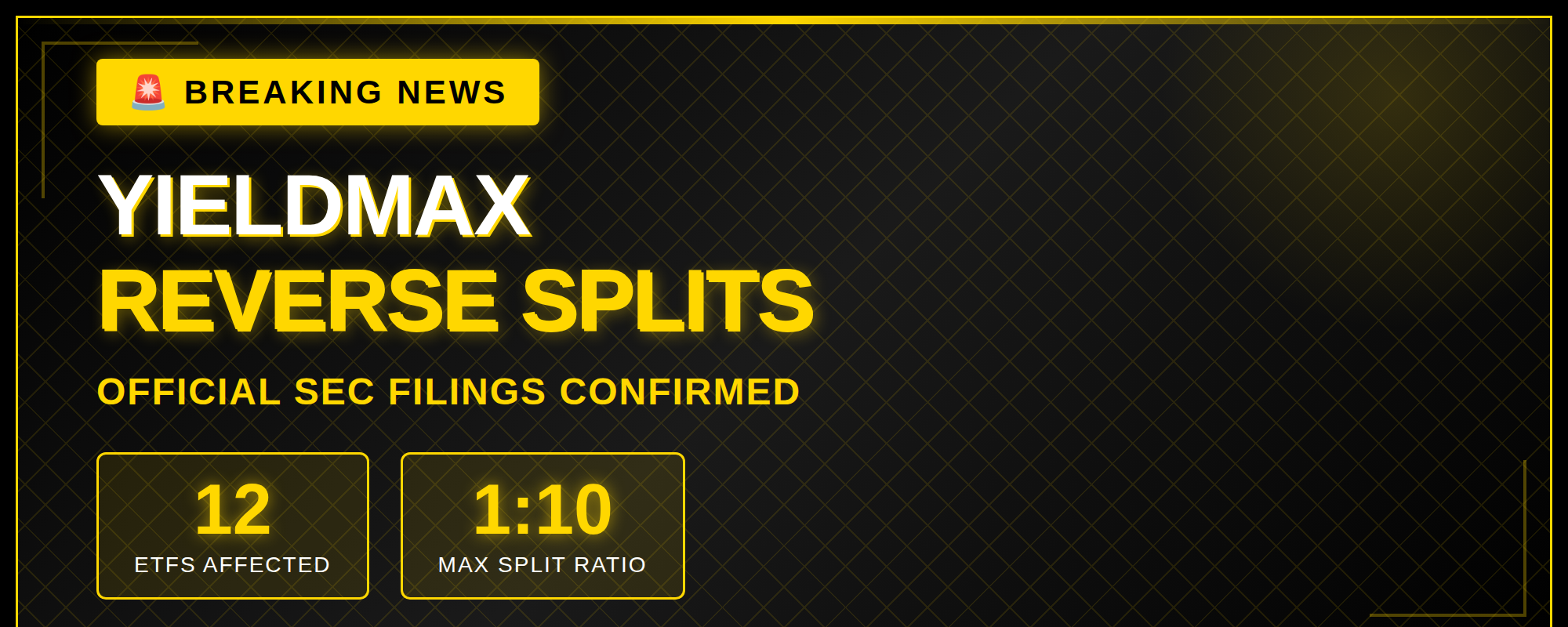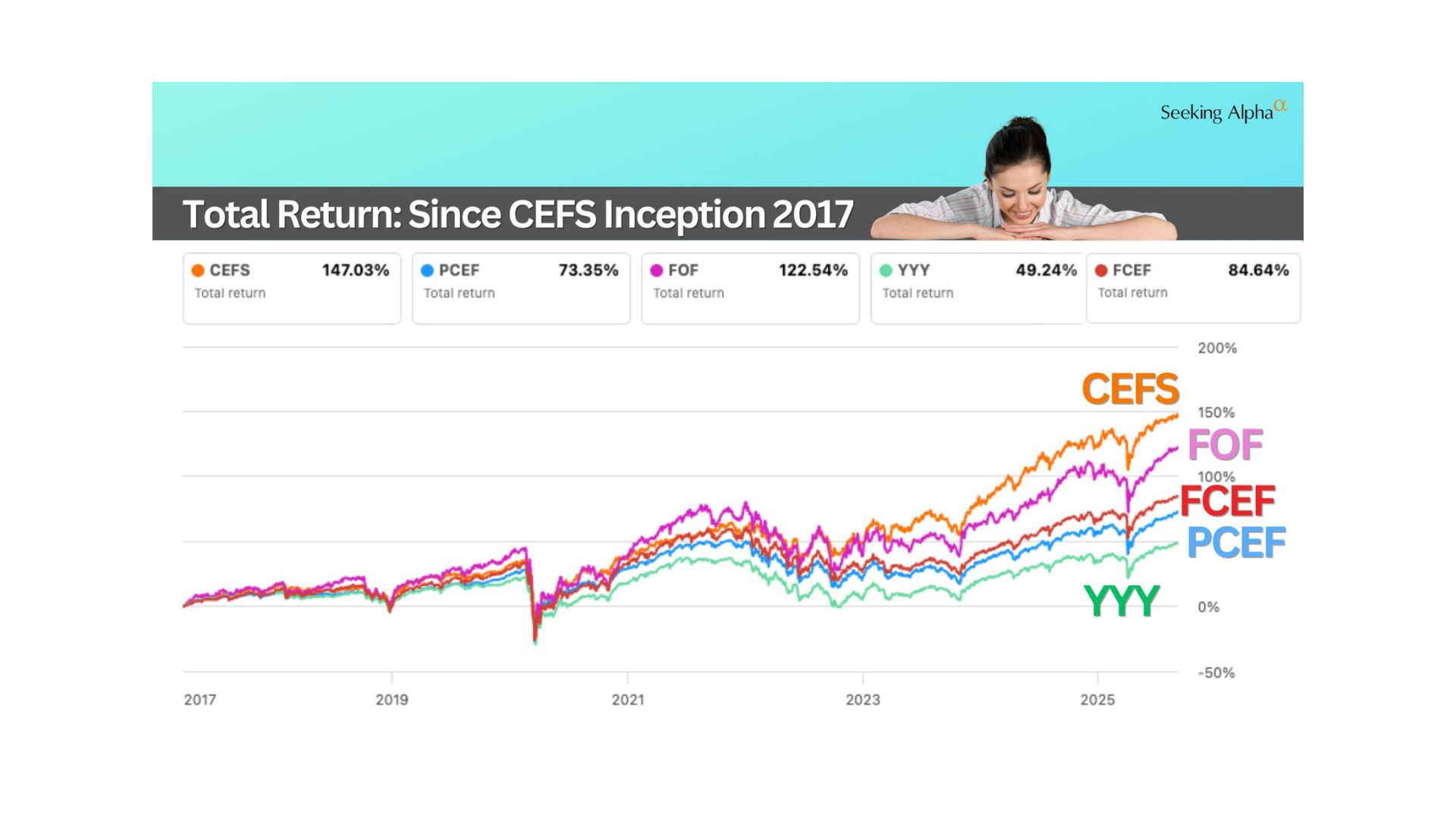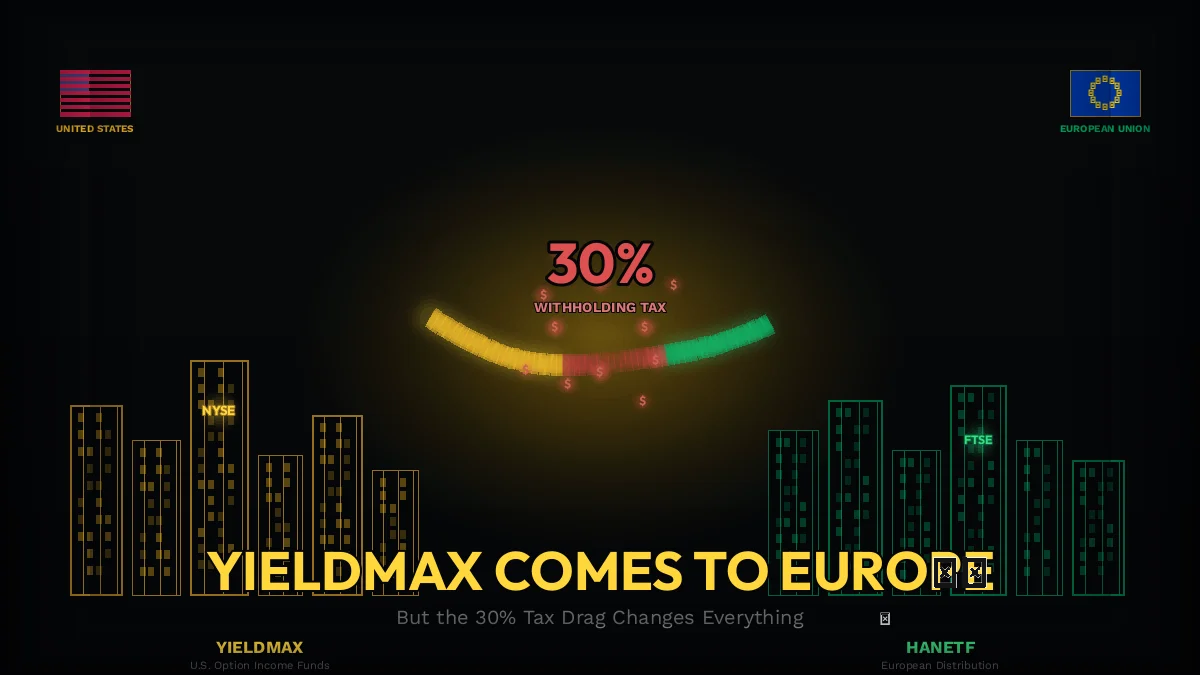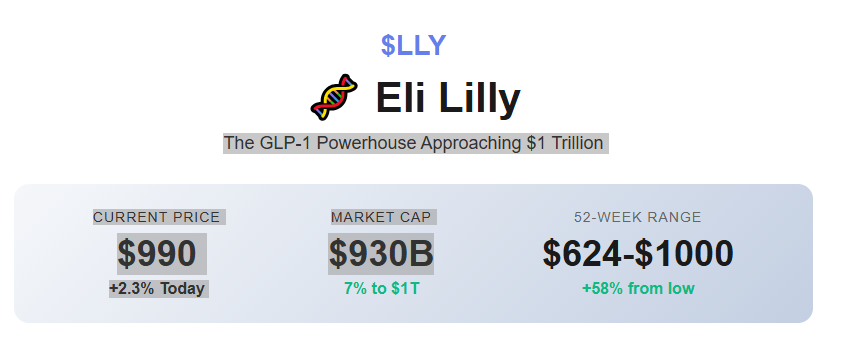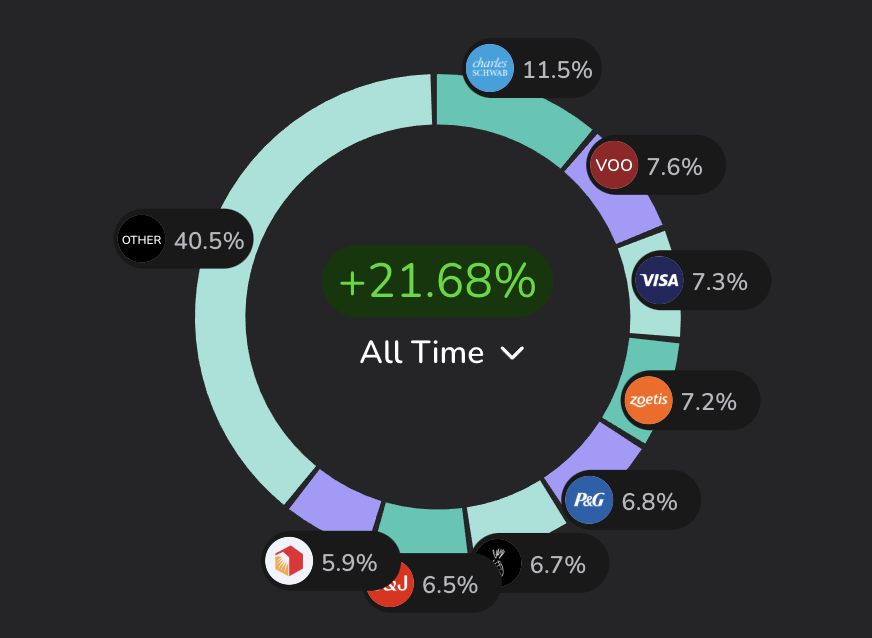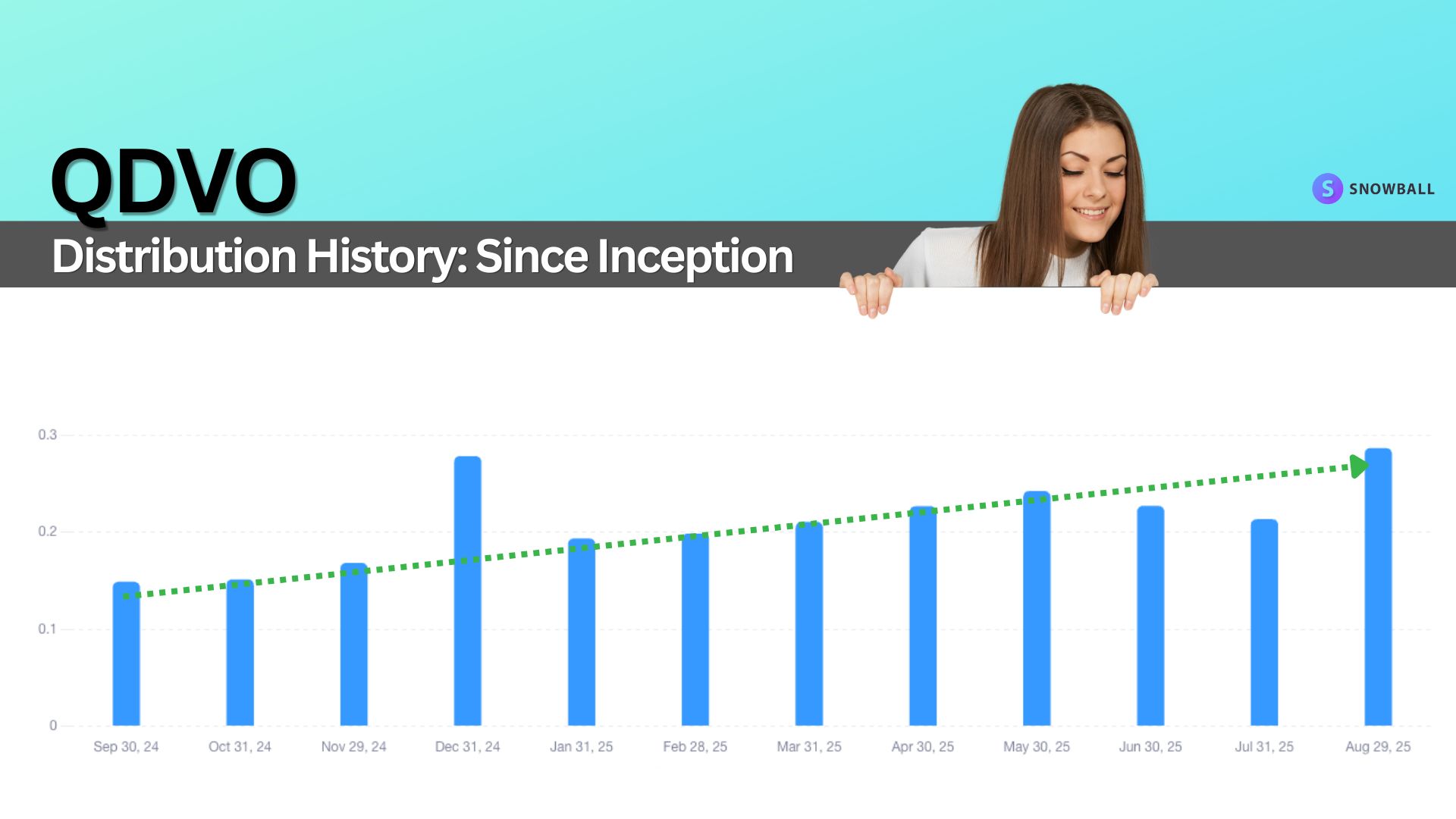The speculation is over. YieldMax/Tidal officially filed with the SEC this evening for reverse splits across 12 of their option income ETFs. If you're holding any of these funds, here's what's happening and what it means for your portfolio.
The Full List
1-for-10 Reverse Splits:
YieldMax Ultra Option Income Strategy ETF (ULTY)
YieldMax Short TSLA Option Income Strategy ETF
YieldMax Short NVDA Option Income Strategy ETF
YieldMax Short COIN Option Income Strategy ETF
YieldMax MRNA Option Income Strategy ETF
YieldMax AI Option Income Strategy ETF (AIYY)
YieldMax COIN Option Income Strategy ETF (CONY)
1-for-5 Reverse Splits:
YieldMax Bitcoin Option Income Strategy ETF (YBIT)
YieldMax TSLA Option Income Strategy ETF (TSLY)
YieldMax XYZ Option Income Strategy ETF
YieldMax ABNB Option Income Strategy ETF (ABYY)
YieldMax Innovation Option Income Strategy ETF (OARK)
What Is a Reverse Split?
If you're new to this, here's the simple version: A reverse split consolidates your shares.
In a 1-for-10 split, every 10 shares you own becomes 1 share at 10x the price. In a 1-for-5 split, every 5 shares becomes 1 share at 5x the price.
Your total investment value doesn't change. If you owned $1,000 worth before the split, you still own $1,000 worth after. You just have fewer shares at a higher price per share.
Why YieldMax Is Doing This
Reverse splits typically happen when share prices get uncomfortably low. Many of these YieldMax funds have been trading in the single digits or low double digits due to:
NAV decay from distributions - These funds pay massive yields by distributing capital, which naturally pushes share prices down over time
Market perception - Low share prices can create negative optics, even if the underlying strategy is working as intended
Institutional requirements - Some institutional investors have minimum price requirements
This has been heavily discussed in income investing communities for months. The writing was on the wall.
What This Means for Income Investors
Let's cut through the noise. Here's what actually matters:
Your distributions don't change (in dollar terms). If you were receiving $100/month in distributions before, you should still receive approximately $100/month after, just from fewer shares at a higher distribution per share.
Your yield percentage stays roughly the same. The math still works out to the same yield on your invested capital.
The optics change. Instead of owning 1,000 shares at $5, you might own 100 shares at $50. Psychologically, this feels different, but financially it's identical.
What Could Change
Here's what to watch:
Market reaction: How will traders respond? Sometimes reverse splits trigger selling due to negative perception, even when fundamentally nothing changed.
Distribution sustainability: This doesn't fix the underlying NAV decay issue. These funds still distribute capital. The split just resets the share price.
Liquidity: With fewer shares outstanding, bid-ask spreads could widen slightly, though YieldMax funds generally have decent volume.
My Take
This is a cosmetic change, not a fundamental one.
If you're in these funds for monthly income and you understand the strategy (synthetic covered calls generating high yields with NAV erosion), nothing about your thesis changes. You're still getting the same exposure, same distributions, same risks.
If you were uncomfortable with the NAV decay before this announcement, you should still be uncomfortable after. The reverse split doesn't change the math - it just makes the share price prettier.
For those of us who've been tracking these funds closely, this was inevitable. When you're paying 60%+ annualized yields, share prices will drop. That's how the math works. The reverse split is YieldMax hitting the reset button.
What I'm Doing
Full transparency: I've been tracking several YieldMax funds as part of my high-yield ETF analysis. This news doesn't change my strategy on any of them.
If you're holding for income and the distributions still meet your needs, there's no reason to panic sell. If you were already questioning these positions, this might be a good time to reassess.
The Bottom Line
Reverse splits aren't inherently good or bad - they're just a corporate action. What matters is whether the underlying strategy still works for your goals.
For income investors: Your monthly distributions should continue uninterrupted. Just with fewer shares.
For traders: Watch the price action closely around the split date.
For the skeptics: This confirms what we already knew - these funds experience NAV decay by design, and eventually needed a cosmetic fix.
Full SEC filings available at
- search for the ticker symbols listed above.
What's your move? Are you holding through the splits or using this as an exit opportunity?
Let's discuss in the comments.




